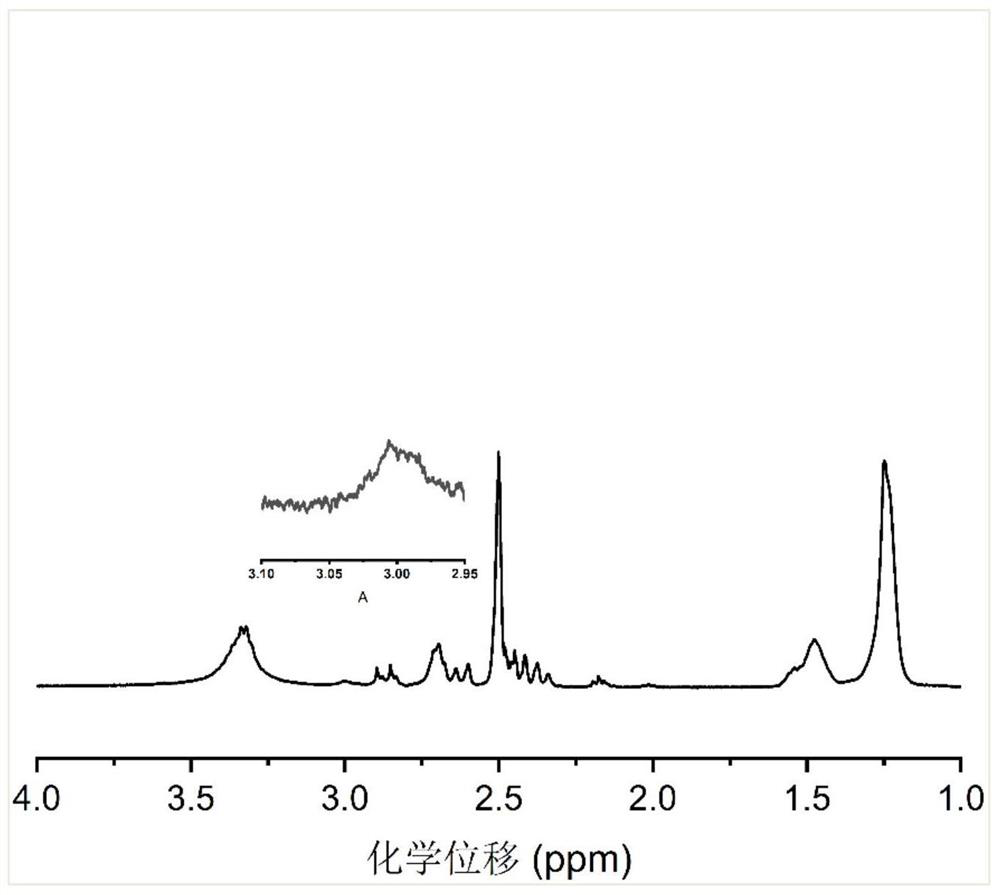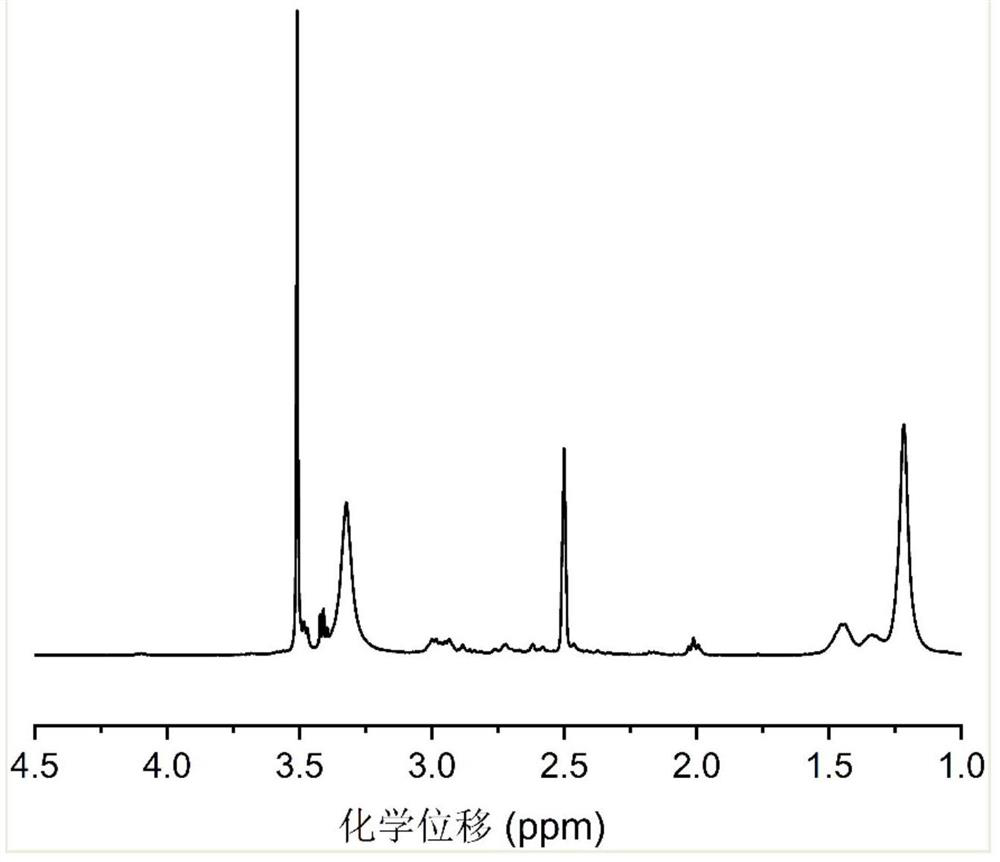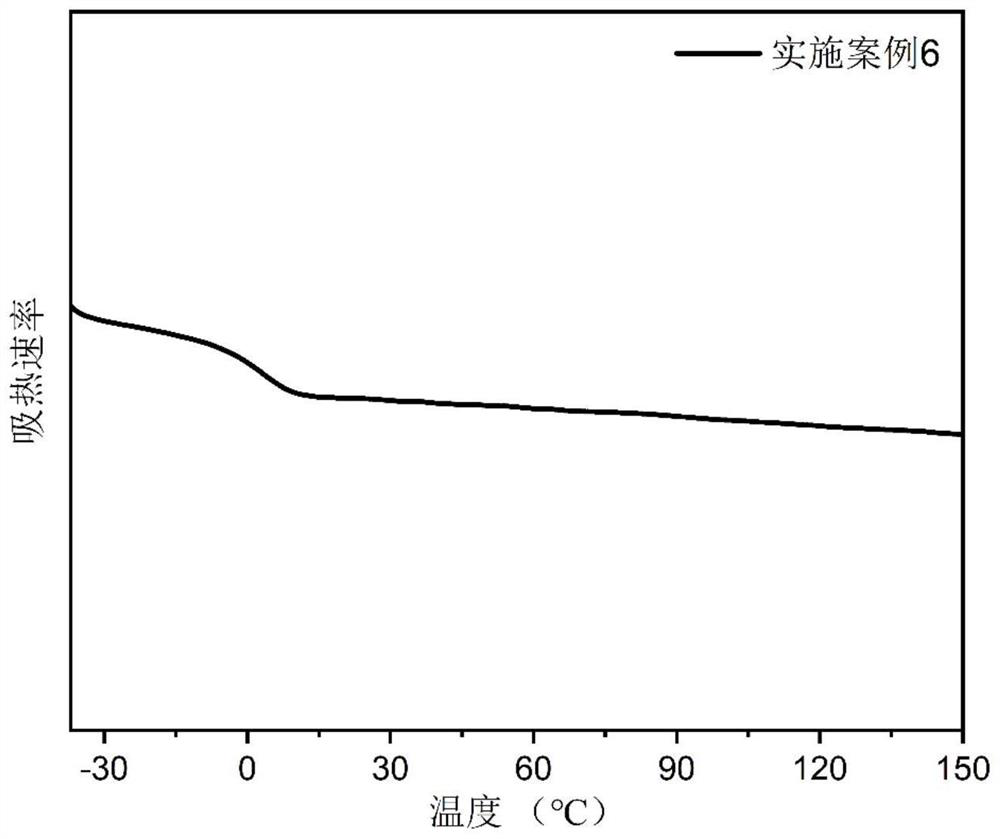Polyamide hot melt adhesive as well as preparation method and application thereof
A polyamide hot-melt adhesive and reaction technology, applied in the direction of adhesives, etc., to achieve the effects of expanding production, low processing temperature, and simple preparation method
- Summary
- Abstract
- Description
- Claims
- Application Information
AI Technical Summary
Problems solved by technology
Method used
Image
Examples
Embodiment 1
[0040] Add 36.09g of nylon salt formed by the equimolar reaction of citric acid and hexamethylenediamine, 2g of succinic acid and 0.54g of a 1.5% aqueous solution of sodium hypophosphite into a polymerization vessel, and heat up to 150°C successively under nitrogen protection. React for 1.5 hours at 165°C for 1 hour, then remove the moisture in the late stage of the reaction to obtain a nylon segment prepolymer;
[0041] Put the above-mentioned nylon segment prepolymer, 3.39g polyethylene glycol (Mn=200) and 0.41g catalyst tetrabutyl titanate together into the polymerization vessel, raise the temperature to 165°C under the protection of nitrogen, and react after it is completely melted 1 hour, and vacuumize at 165°C to below 2000Pa for 1 hour, extract the obtained product with water at room temperature for 8 hours, change the water every two hours; pre-dry the product in a blast oven, and finally use a vacuum oven at 60°C Let dry for 12 hours.
[0042] The bonding strength an...
Embodiment 2
[0044] Add 35.91g of nylon salt formed by the equimolar reaction of citric acid and hexamethylenediamine, 2.5g of adipic acid and 0.54g of a 1.5% sodium hypophosphite aqueous solution into the polymerization vessel, and raise the temperature to 150°C sequentially under nitrogen protection React for 1.5 hours, react at 160°C for 2 hours, and then remove the water in the late stage of the reaction to obtain a nylon segment prepolymer;
[0045] Put the above-mentioned nylon segment prepolymer, 6.84g polypropylene glycol (Mn=400) and 0.45g catalyst tetrabutyl titanate together into the polymerization vessel, raise the temperature to 170°C under the protection of nitrogen, and react for 1 hour after it is completely melted , and evacuated at 170°C to below 2000Pa to react for 2 hours, extract the obtained product with water at room temperature for 8 hours, and change the water every two hours; pre-dry the product in a blast oven, and finally dry it in a vacuum oven at 60°C for 12 H...
Embodiment 3
[0048] 35.51g of nylon salt formed by the equimolar reaction of citric acid and octyldiamine, 2.5g of adipic acid and 0.71g of 2% sodium hypophosphite aqueous solution were added to the polymerization vessel, and the temperature was sequentially raised to 140°C under nitrogen protection. ℃ for 2 hours, 160℃ for 1 hour, and then remove the water in the late stage of the reaction to obtain a nylon segment prepolymer;
[0049] Put the above-mentioned nylon segment prepolymer, 6.84g polypropylene glycol (Mn=400) and 0.67g catalyst tetrabutyl titanate together into the polymerization vessel, raise the temperature to 170°C under the protection of nitrogen, and react for 1 hour after it is completely melted , and evacuated at 170°C to below 2000Pa to react for 2 hours, extract the obtained product with water at room temperature for 8 hours, and change the water every two hours; pre-dry the product in a blast oven, and finally dry it in a vacuum oven at 60°C for 12 Hour;
[0050] The...
PUM
 Login to View More
Login to View More Abstract
Description
Claims
Application Information
 Login to View More
Login to View More - R&D
- Intellectual Property
- Life Sciences
- Materials
- Tech Scout
- Unparalleled Data Quality
- Higher Quality Content
- 60% Fewer Hallucinations
Browse by: Latest US Patents, China's latest patents, Technical Efficacy Thesaurus, Application Domain, Technology Topic, Popular Technical Reports.
© 2025 PatSnap. All rights reserved.Legal|Privacy policy|Modern Slavery Act Transparency Statement|Sitemap|About US| Contact US: help@patsnap.com



